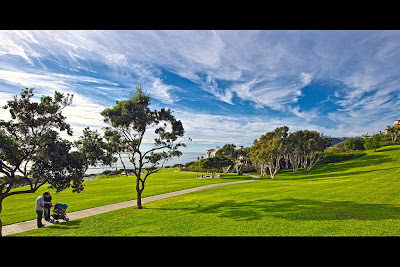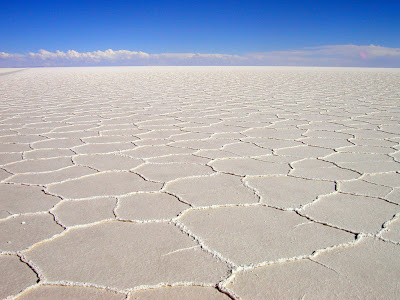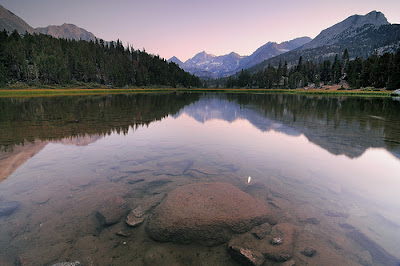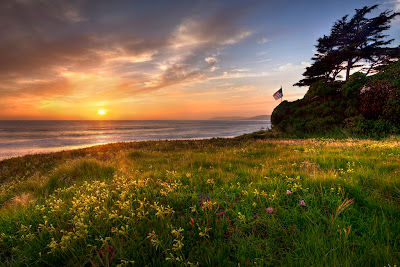1. Make use of the Hyper-focal Distance
By focusing at the magical plane or hyper-focal distance you could ensure that your entire frame is in sharp focus. If you are not familiar with the concept of hyper-focal distance do not worry, just make sure you focus on an element which lies at the lower one thirds of the frame.
 |
| Photo By Eric |
2. Shoot Vertical frames too
Who said a landscape shot can’t be vertical, experiment with all kinds of framing and compositions while shooting. Make sure you shoot both vertical and horizontal compositions of every scene you shoot. Sometimes verticals come out better than their horizontal counterparts.
 |
| Photo By Dene |
3. Avoid the narrowest aperture setting
It’s a common belief that lenses are sharpest and produce their best results when stopped down to their narrowest aperture setting, well in most cases this is not true, actually most of the lenses are a bit soft at their narrowest aperture setting due to diffraction.
4. Look for alternate light sources
While shooting landscapes most photographers do not even think of lighting up their subject, they rely on whatever light is available, only variation people seek is to wait for the magic hours for the sun’s rays to weave its magic by lengthening shadows and the golden rays. Well why not think of using some additional light sources like an auto mobile head light, street lights, light from a camp fire, strategically placed remote flashes (hidden from the frame) illuminating certain objects in the scene etc.
 |
| Photo By Helga Kvam |
5. Use the histogram
If your camera has a histogram, use it. Histogram helps you make sure that your frame is well exposed and the highlights are not blown. Histogram is especially useful while shooting landscapes because the bright sun makes it very difficult or almost impossible to judge photos by viewing them in the LCD.
 |
| Histogram |
6. Isolate a part of the scene
More often than not you’ll find that when you reach a perfect scenic spot, there will always be some unwanted elements that is immovable and kind of spoils the shot. Best method to counter this situation is to figure out the most important elements in your scene, focus your attention to them and recompose your frame excluding the unwanted elements from the scene entirely.
 |
| Photo By Dan Ballard |
7. Look for patterns or repetition
You could easily add an emotional touch to your image by making use of patterns or repetitions that naturally occur in nature. Patterns or repetitions are to be found everywhere in nature you only need to take notice. A row of trees, a row of flowers, patterns of sand, etc, while shooting urban landscapes street lights, mile stones, etc. one thing to keep in mind while making use of patterns is to compose in such as way that the patterns fill your frame. This will help emphasize them. Experiment by breaking the pattern with an additional element.
 |
| Photo By gardawind |
8. Deal with bland skies
Dull sky with no clouds or shades could easily spoil the shot, so if you have a bland sky try avoiding it in your composition, if that is not possible, try experimenting with white balance. Cloudy / shade mode will enhance colours and give some life to the shot. If all these fail then you could fix your photo in post production using photoshop, light room or other image editing software's.
 |
| Photo By Joshua Cripps |
9. Use a graduated ND Filter
A common problem landscape photographers encounter is the variation of light in different parts of the frame. Usually the sky will be a couple of stops brighter than the rest of the scene making it impossible to get right exposure, if you expose the sky properly the rest of the scene will be under exposed and if you expose the rest of the scene properly, the sky will be over exposed. This problem could easily be solved by using a graduated neutral density filter. A graduated neutral density filter could be used to darken the sky and also add a sense of drama to your shot.
 |
| Photo By kevincole |
10. Shoot from ground level
Get down on the ground and compose your shots, you will get an entirely different perspective of the landscape than the one you are used to. This technique is extremely useful if you would like an exaggerated view of your landscape.
 |
| Photo By Patrick Smith |
In the next article we will discuss about Photography - Landscape Photography - Landscape Photography - Using Lines effectively while shooting Landscapes